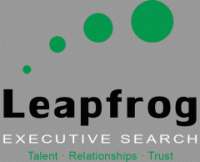Who’s the HERO of Your Story?
Category : 2019
“Ferris Bueller, you’re my hero.”
Cameron Frye’s unforgettable line from the 80’s teen hit Ferris Bueller’s Day Off captures the paradox of being a hero. You can’t give yourself the title.
A hero is “a person who is admired or idealized for courage, outstanding achievements, or noble qualities,” (Oxford). Admiration from others humbles a leader and prompts self-reflection. Synonyms for self-admiration include ego, conceit, pomposity, and a plethora of other words that begin with “self.”
We all like heros, when we decide who they are. A story captures us when we identify with the hero-when we recognize ourselves in their story. The story of your brand becomes powerful and engaging when you make it easy for others to identify with the hero. The best way to do that is by making your customer, your employee, your boss, or your friend the hero of your story. It’s counter-intuitive-and very effective.
Brands become memorable when you present yourself as trusted guide, mentor, or teacher-not as a hero. Messaging company Corporate Visions trains salespeople to create a story about their customer where the world is normal, something happens, the hero (customer) runs into trouble, the mentor (person or vendor) comes on the scene, the hero follows the mentor’s guidance, and the hero reaches the desired goal.
Psychologist Jerome Bruner says his research suggests we are 20 times more likely to remember facts if they’re part of a story. When you present your “resume” in the context of a story where the client, challenge, or opportunity is the central character (hero), you more effectively highlight your value by demonstrating how you function as a mentor/guide that skillfully shows a customer or company the way out of a dilemma.
In a recent article, Cheryl Farley at PeopleResults (www.people-results.com) noted, “Our brains and bodies chemically and physically respond to stories. . . . Our brains process stories like they process real life. Although we know the difference between a story and what is happening in real time, neuroscience tells us that we create emotions and responses in the same way we would if we were living it.”
Research by Claremont College professor Paul Zak, author of The Moral Molecule: How Trust Works, tells us Oxytocin is the neurochemical that Farley is talking about. Zak says oxytocin gives our brains the “it’s safe to approach others” signal. If oxytocin is released, it is more likely people will trust the situation and the storyteller and there is a better chance they will take the action the storyteller suggests.
Tell the story of how you helped a previous “hero” out of a problem and the hero you’re talking with will more readily see how you can help them. Tell a story about your “heroism,” and you can anticipate the lack of interest and passive avoidance we give someone taking a trip with their ego.
Brands are built on both facts (what a brand does) and feelings (how people feel when the product/person helps them). Connect the facts of your story with the feelings of your audience, and you create a memorable impression that helps build a lasting brand.
